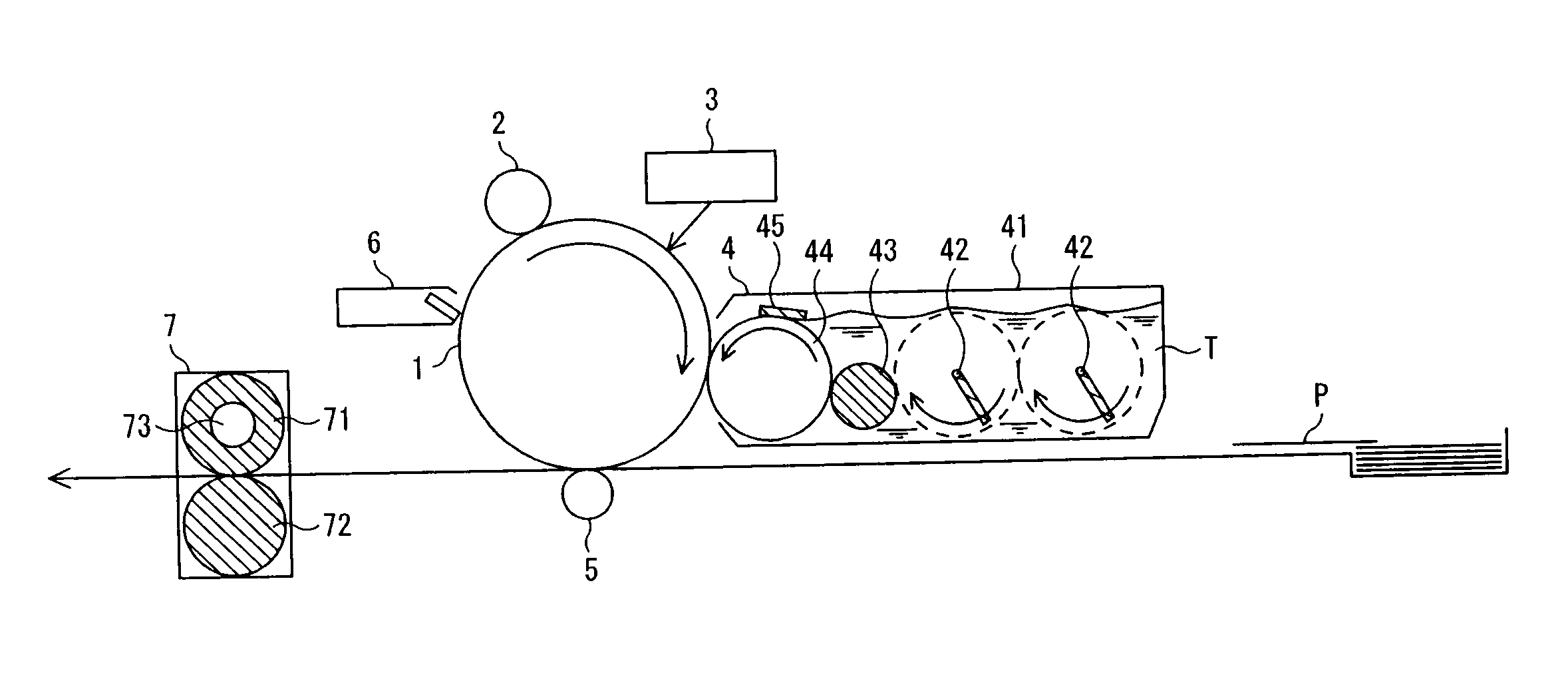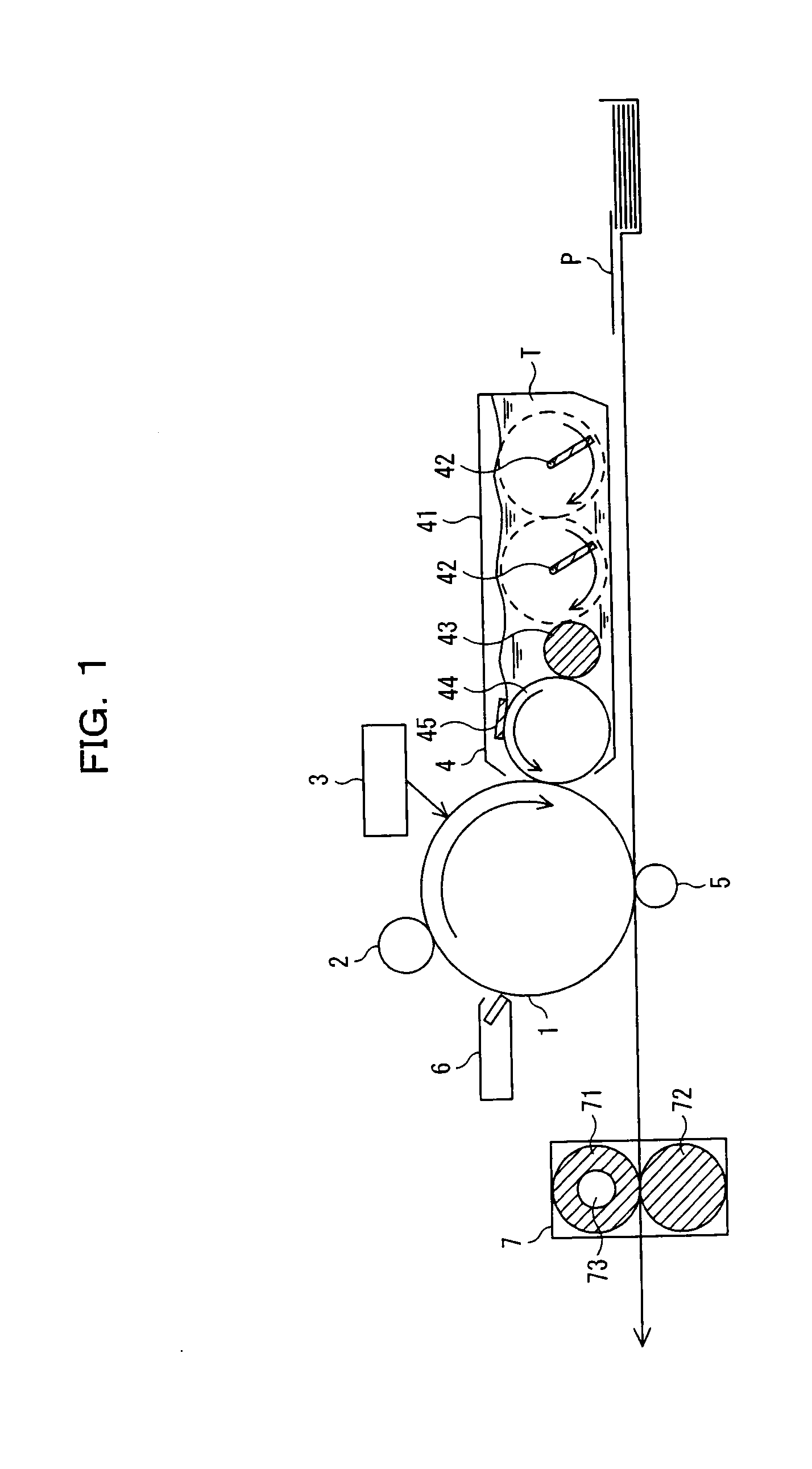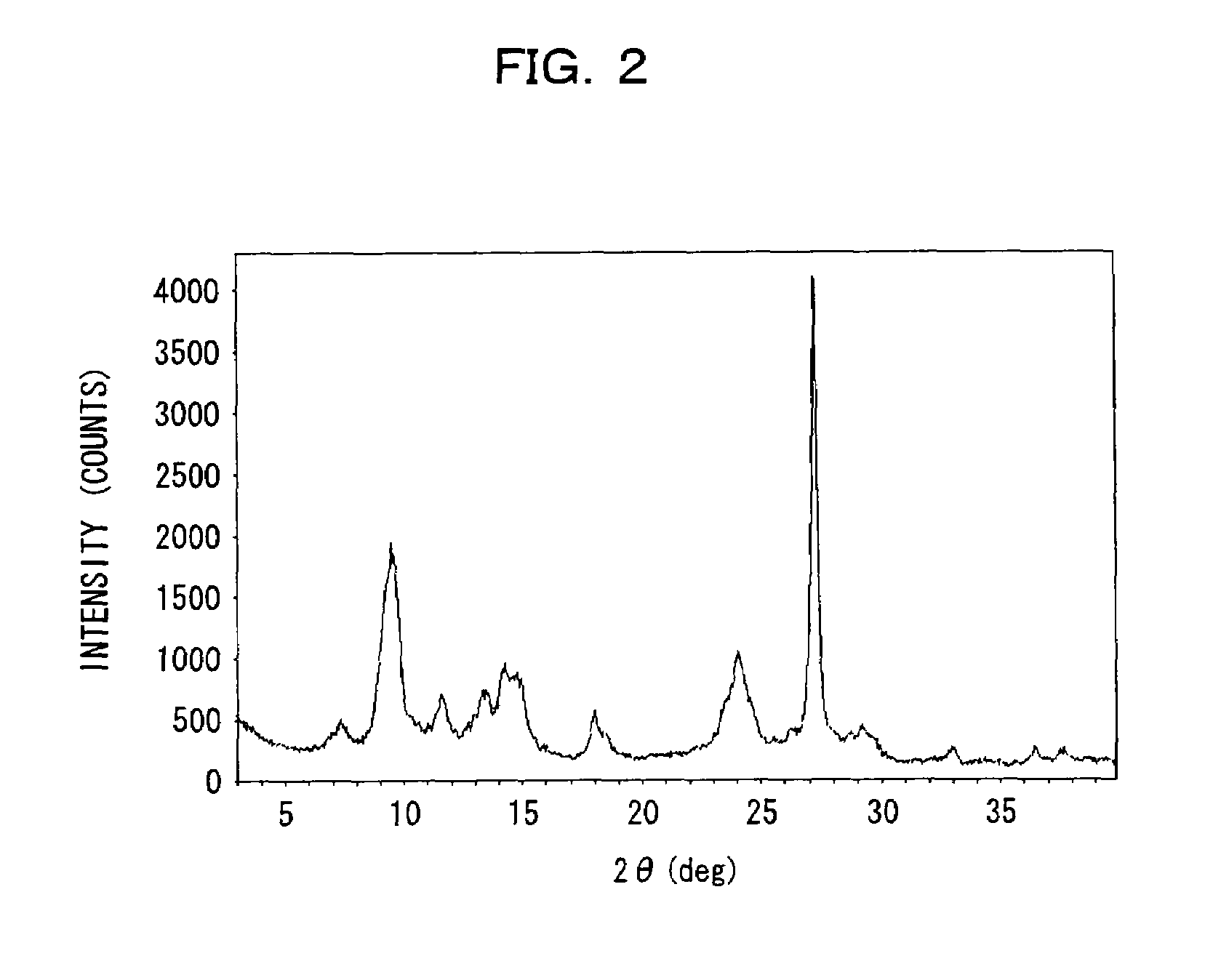Electrophotographic photosensitive member, image forming device using same, and electrophotographic photosensitive member cartridge
a photosensitive member and electrophotography technology, applied in the field of electrophotographic photosensitive member cartridges, can solve the problems of insufficient mechanical strength, large volume of photoconductive materials to be doped, direct painting of image quality, etc., and achieve excellent abrasion resistance
- Summary
- Abstract
- Description
- Claims
- Application Information
AI Technical Summary
Benefits of technology
Problems solved by technology
Method used
Image
Examples
production example 1
Polyester Resin X
[0621]Sodium hydroxide, 23.01 g, and H2O, 940 mL, were weighed out in a 1000 mL beaker, and the mixture was dissolved with stirring. 49.36 g of bis(4-hydroxy-3-methylphenyl)methane (hereinafter abbreviated as “BP-a”) was added to this solution and dissolved therein with stirring. This alkaline aqueous solution was transferred to a 2-L reaction vessel. Benzyltriethylammonium chloride, 0.5766 g, and 2,3,5-trimethylphenol, 1.2955 g, were then added to the reaction vessel in this order. Separately, a mixed solution of diphenylether-4-4′-dicarboxylic acid chloride, 65.27 g, and dichloromethane, 470 mL, were transferred to a dropping funnel. While maintaining the external temperature of the polymerization vessel at 20° C., the dichloromethane solution was dropped from the dropping funnel to the alkaline aqueous solution in the reaction vessel over a period of one hr under stirring. After stirring for further 5 hrs, dichloromethane, 783 mL, was added, and stirring was cont...
production example 2
Polyester Resin Y
[0622]Sodium hydroxide 22.34 g and H2O 940 mL were weighed out in a 1000 mL beaker, and the mixture was dissolved with stirring. To this solution was added 1,1-bis(4-hydroxy-3-methylphenyl)ethane (hereinafter abbreviated as “BP-b”) 51.04 g, and the mixture was stirred and dissolved. This alkaline aqueous solution was transferred to a 2-L reaction vessel. Benzyltriethylammonium chloride 0.5579 g and 2,3,5-trimethylphenol 1.0613 g were then added to the reaction vessel one by one. Separately, a mixed solution of diphenylether-4-4′-dicarboxylic acid chloride 63.37 g and dichloromethane 470 mL were transferred to a dropping funnel. While maintaining the external temperature of the polymerization vessel at 20° C., the dichloromethane solution was dropped from the dropping funnel to the alkaline aqueous solution in the reaction vessel over a period of one hr under stirring. After stirring for further 5 hrs, dichloromethane 783 mL was added, and stirring was continued for ...
production example 3
Polyester Resin Z
[0624]Sodium hydroxide 7.20 g and H2O 282 mL were weighed out in a 500 mL beaker, and the mixture was dissolved with stirring. To this solution 2,2-bis(4-hydroxy-3-methylphenyl)propane (hereinafter abbreviated as “BP-c”) 17.40 g was added, and the mixture was stirred and dissolved. This alkaline aqueous solution was transferred to a 1-L reaction vessel. Benzyltriethylammonium chloride 0.1798 g and 2,3,5-trimethylphenol 0.3421 g were then added to the reaction vessel one by one. Separately, a mixed solution of diphenylether-4,4′-dicarboxylic acid chloride 10.21 g, terephthalic acid chloride 4.22 g, isophthalic acid chloride 2.81 g and dichloromethane 141 mL were transferred to a dropping funnel. While maintaining the external temperature of the polymerization vessel at 20° C., the dichloromethane solution was dropped from the dropping funnel to the alkaline aqueous solution in the reaction vessel over a period of one hr under stirring. After stirring for further 4 hr...
PUM
| Property | Measurement | Unit |
|---|---|---|
| Fraction | aaaaa | aaaaa |
| Percent by mass | aaaaa | aaaaa |
| Percent by mass | aaaaa | aaaaa |
Abstract
Description
Claims
Application Information
 Login to View More
Login to View More - R&D
- Intellectual Property
- Life Sciences
- Materials
- Tech Scout
- Unparalleled Data Quality
- Higher Quality Content
- 60% Fewer Hallucinations
Browse by: Latest US Patents, China's latest patents, Technical Efficacy Thesaurus, Application Domain, Technology Topic, Popular Technical Reports.
© 2025 PatSnap. All rights reserved.Legal|Privacy policy|Modern Slavery Act Transparency Statement|Sitemap|About US| Contact US: help@patsnap.com



